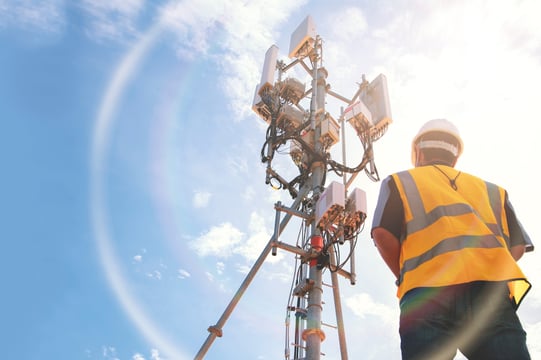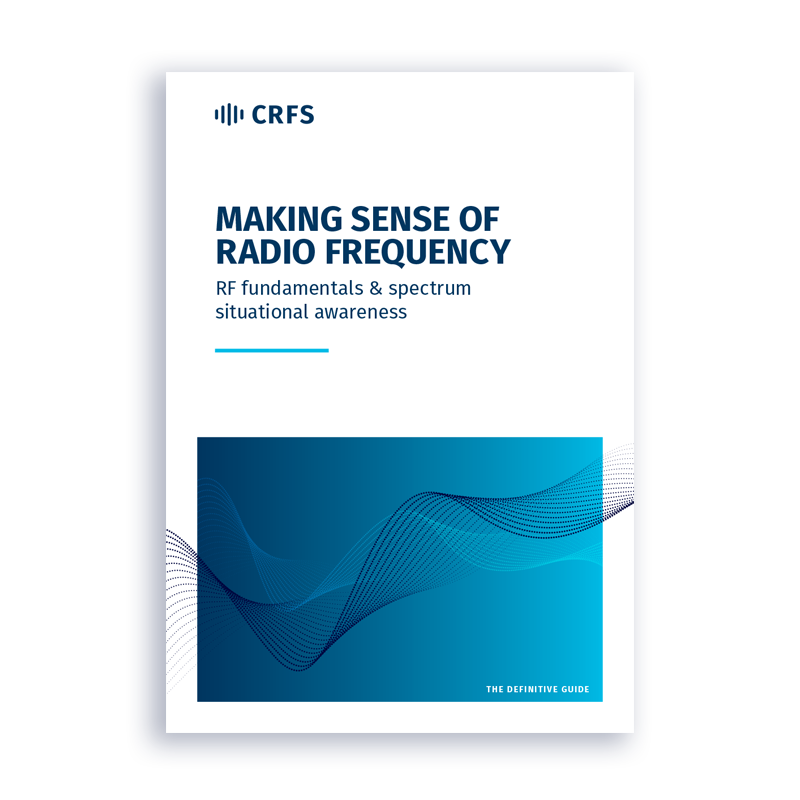
There is a plethora of wireless-enabled devices, broadcasters, cellular technologies, Bluetooth/ZigBee/Wi-Fi/ Z-Wave/IEEE protocols, together with a whole host of other RF sources—all competing for RF spectrum. Radio frequency interference (RFI) is on the rise and needs to be kept in check by seamlessly identifying, categorizing, and locating likely sources.
Breakthrough innovations in communication technologies, universal 5G rollouts, combined with IIoT, industry 4.0, digital robots, and other autonomous technologies coming to fruition are causing a dramatic increase in the volume of digital information data being transmitted wirelessly.
The knock-on effect is congestion in the upper limits of the RF spectrum. Our dependency on wireless RF technology is inevitably leading to higher signal densities, more complex modulation methods, heightened demand for wider signal bandwidths, and, more seriously, a greater risk of interference between frequency ranges.
As we continue to exploit the electromagnetic spectrum, it is fundamental that the deployed RF spectrum monitoring tools are designed with agility in mind to keep pace with demand. Moreover, they must have the capacity to capture huge volumes of constantly changing data to support accurate RF signal sampling to prevent unrecognized and unauthorized frequencies from compromising legitimate services.
What is RF interference?
Radio frequency interference (RFI) is the transmission of RF signals at levels that interfere with the operation of nearby devices, applications, technologies, and communication networks. RFI can occur at any time, and if the source is not identified, categorized, and located quickly using appropriate RFI hunting tools, these unauthorized signal sources will negatively impact user experience, quality of service (at device and network levels), as well as the operability and performance of all RF-enabled hardware.
What industries are impacted by RFI?
RFI is an unavoidable symptom of all electronic mechanisms that receive and transmit RF signals and is virtually impossible to avoid. It decreases coverage and capacity on communications networks and is a core performance-limiting factor in commercial cellular services. Although RFI poses a challenge to all markets and applications, the following industries are particularly impacted:
- Telecommunications
- Electrical engineering
- Aerospace & Aviation
- Military & Government
- Occupational safety
- Non-commercial users
Interference sources need to be quickly identified and categorized to avoid service disruption or equipment damage, maintain business continuity, and ensure public safety and national security.
What are examples of radio frequency interference?
RFI manifests itself in many formats and can be generated unintentionally or deliberately by a range of devices and applications. Having the capacity to detect, categorize, and locate interference sources quickly is imperative.
1. Pirate radio stations
Illegal broadcasters tend to deploy poorly designed, low-power transmitters usually obtained on the black market. They are frequently mounted on high-rise tower blocks, and not only do such installations pose severe health and safety hazards, but the levels of interference also emitted as a result can disrupt safety critical communications such as air traffic control or blue light services. It is vital that these interference sources are quickly identified and dealt with to protect the public.
2. Cellular communications
Tell-tale signs that RFI is impacting cellular communications include crackling, humming and pulsing sounds, audio and video lagging, poor sound quality, poor internet connectivity, call jittering, dropped calls, and slow performance in general. While some of these issues can be resolved by changing the parameters at the handset level, RF interference at the network level impacts the performance of Telco equipment, thus degrading Quality of Service (QoS) for end users.
3. Military and defense
Military aircraft and armored vehicles employ increasing amounts of RF-enabled electronics, all of which are capable of emitting and succumbing to electrical and RF interference, which is both beneficial and dangerous. Failure to detect unauthorized and unrecognized RF signals will jeopardize military and defense operations. Tactical advantages will be threatened and locations revealed if patrols cannot access wideband spectrum analyzers to accurately identify and geolocate unrecognized RF signals.
4. Drones
Drone deployment is rising unprecedently due to their utility and growing affordability. Increased usage, however, is one of the most significant contributors to RFI.
Unrecognized RF signals emitted by these UAVs can bring commercial aviation to a standstill and seriously compromise military operations, with activities ranging from espionage, obtaining illegal footage, or creating targeted decoys to delivering unwanted objects. The RF transmissions emitted must, therefore, be identified and located quickly to prevent unlawful usage, unnecessary disruptions, and, more importantly, potential collisions with other airborne objects.
How can RF interference be detected?
Finding and locating RF signal interference has historically been challenging, involving handheld spectrum analyzers, which are no longer sufficient to capture the levels of high-fidelity RF data needed for dynamic signal decoding and demodulation. Equipment has also been limited to certain frequency ranges for cost reasons.
Next-generation analyzers empower spectrum regulators to dynamically measure the different frequencies present in a signal. Indications of RF interference, intentional or unintentional, are represented visually as spikes or bands on the graph.
Intentional interference is the deliberate exploitation of the RF spectrum to interrupt genuine RF signals, disrupt services through jamming or provide false information through spoofing. Faulty equipment, leaky cables, poor design, and installation or electrical noise usually cause unintentional interference.
Those responsible for managing and monitoring the RF spectrum will not know the cause of RFI or the frequencies being used. Therefore, they need access to a wideband system so all bases are covered and nothing is missed.
Can you fix RFI?
Before you can fix RFI, you need to determine the cause to take appropriate action. The most efficient way to achieve this is through 24/7 spectrum monitoring using automated wideband interference detection equipment. One such solution is to use an RF receiver that triggers an alarm if unrecognized signals are detected. Compatible software can then be used to visualize this information and build a signal library.
Conclusion
Radio frequency interference (RFI) challenges will only be magnified as wireless-enabled hardware evolves. By deploying the latest spectrum analyzing technologies and by following industry best practices, unrecognized RF signals can be quickly and effectively dealt with before any damage is caused.

White paper
Making sense of radio frequency
RF matters because it is critical for today’s electronic devices – the foundation of our modern, wirelessly-connected lives.
